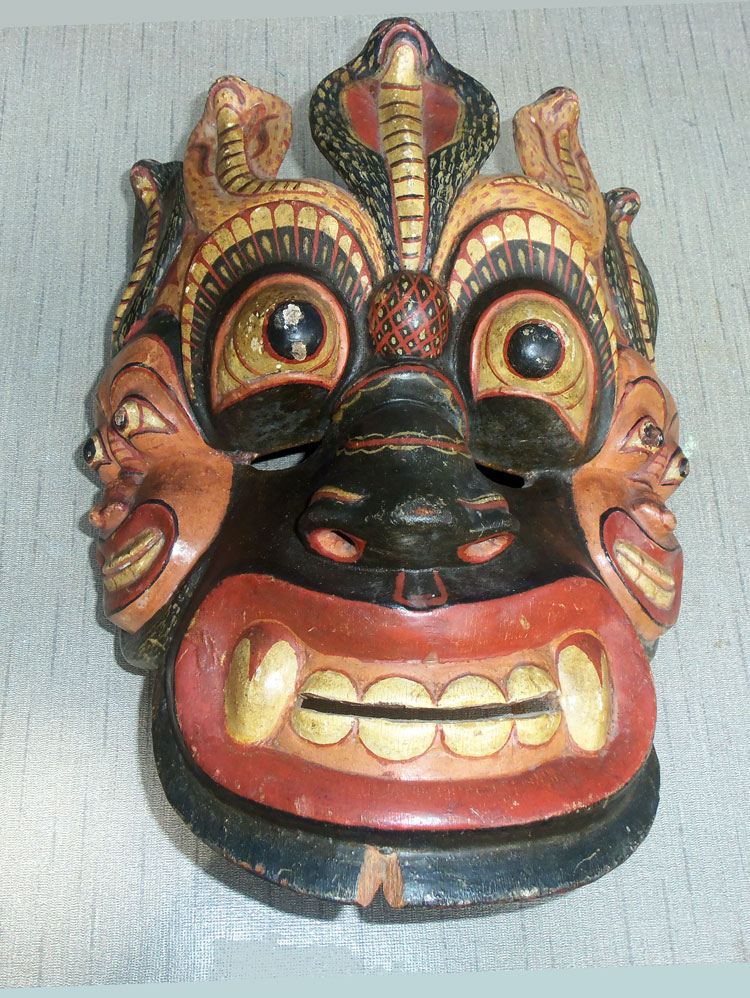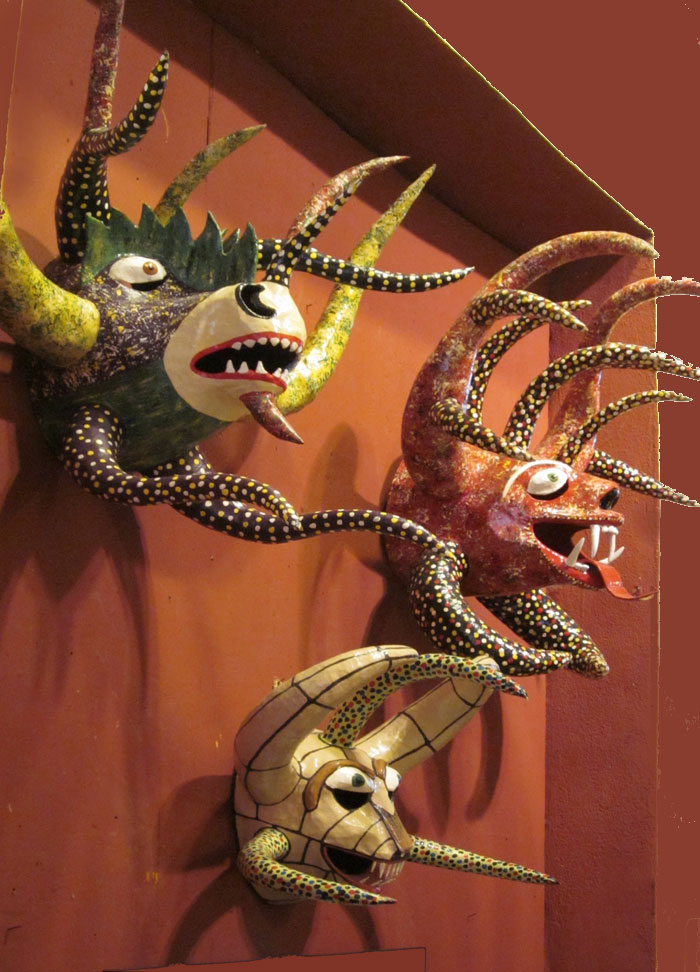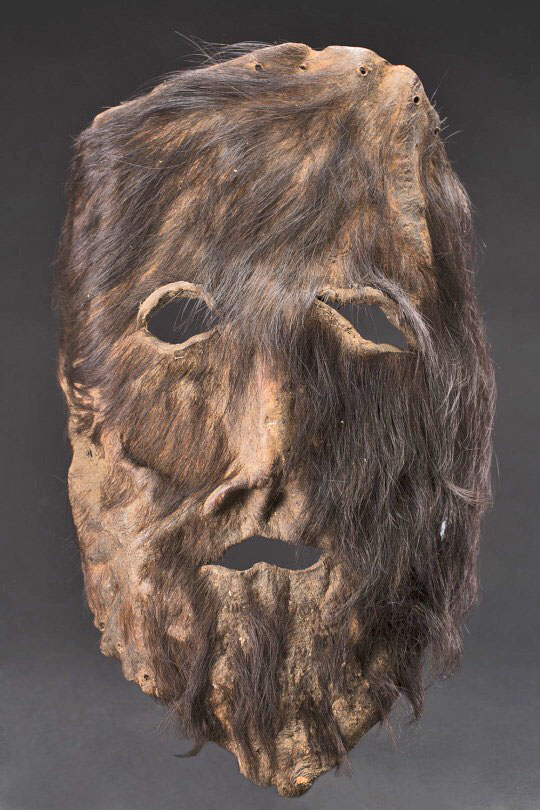 Q: Went to a church Thrift Shop last week and they were having a half off sale on the “artwork”. Bought three Indonesian Masks for $20.00! The two smaller ones have real animal tusks (seven each mask)held to the masks with old finishing type nails, the ears attached the same way. Guessing they are definitely tourist-type masks. The largest mask is 10″ wide by 14 1/2″ high and is a one piece carving. Five cobras make up the top of the headdress and the ears are human heads. On the back appear to be missing attachments for the wearer for a head strap, also one hole through the top. The wood appears to be dry and old. The eye slits and nostrils are exactly where they should be for a mask wearer and the top back of the mask sits on top of ones head. Doug, 1204 Q: Went to a church Thrift Shop last week and they were having a half off sale on the “artwork”. Bought three Indonesian Masks for $20.00! The two smaller ones have real animal tusks (seven each mask)held to the masks with old finishing type nails, the ears attached the same way. Guessing they are definitely tourist-type masks. The largest mask is 10″ wide by 14 1/2″ high and is a one piece carving. Five cobras make up the top of the headdress and the ears are human heads. On the back appear to be missing attachments for the wearer for a head strap, also one hole through the top. The wood appears to be dry and old. The eye slits and nostrils are exactly where they should be for a mask wearer and the top back of the mask sits on top of ones head. Doug, 1204
A: This large carving looks great and is an unusual example of a Kolam mask from Sri Lanka. You seldom see one with five cobras and two human faces as ears. This could be an important addition for a serious collection of masks, especially if it is truly as old and used as it looks. Let’s also see if we can identify the demon this character is meant to portray.
Disguise and mimicry are features of the Sri Lankan dance tradition. The dancers wear masks and costumes and perform with mime, dance and some dialogue. The characters are divided into several types: humans, animals and demons. There are many to choose from. Performances depict village scenes and extend to stories that involve spirits and creatures from Hindu mythology.   These traditions are well researched and you can easily learn more on the internet. A These traditions are well researched and you can easily learn more on the internet. A
|

 3 Vejigantes from Puerto Rico
3 Vejigantes from Puerto Rico
 Hairy leather mask
Hairy leather mask
2 Comments
Aaron
Naga sanniya, a nightmare-causing snake demon. A very nice mask. It’s a shame about the little chip, but it’s still worth a lot more than $20.
Douglas Melvin
I have been doing some research on my mask. Masks are generally of two types, ones made for healing rituals ((Tovil) or in Kolam Maduwa which are traditional comic folk plays. My particular mask is a Naga Raksha (Cobra mask) used in Rakasha dances in Kolam Maduwa plays. The masks are generally made from a local wood known as Kadura (stychnos nux vomica) which is easy to carve and is light. A complete set of masks would be 120 masks! I believe that my mask is rather old due to the condition of the paint and wood. It was also made to be used for a mask wearer as there are four holes on the back of the mask which had attachments to let the wearer attach the mask to his head with a strap or cloth. It is a hand made mask due to the numerous chisel and carving knife marks in the wood especially on the back side of the mask. This was mask to be worn not just to be put on display. Check out the Ariyapala Mask Museum by internet in Sri Lanka.